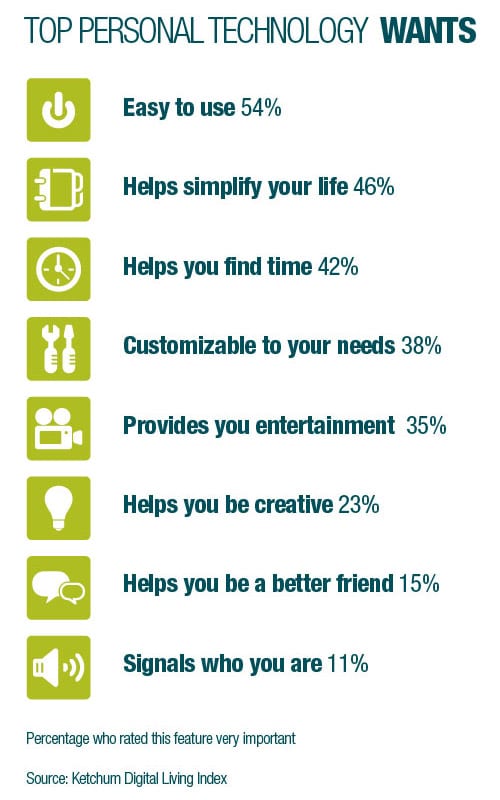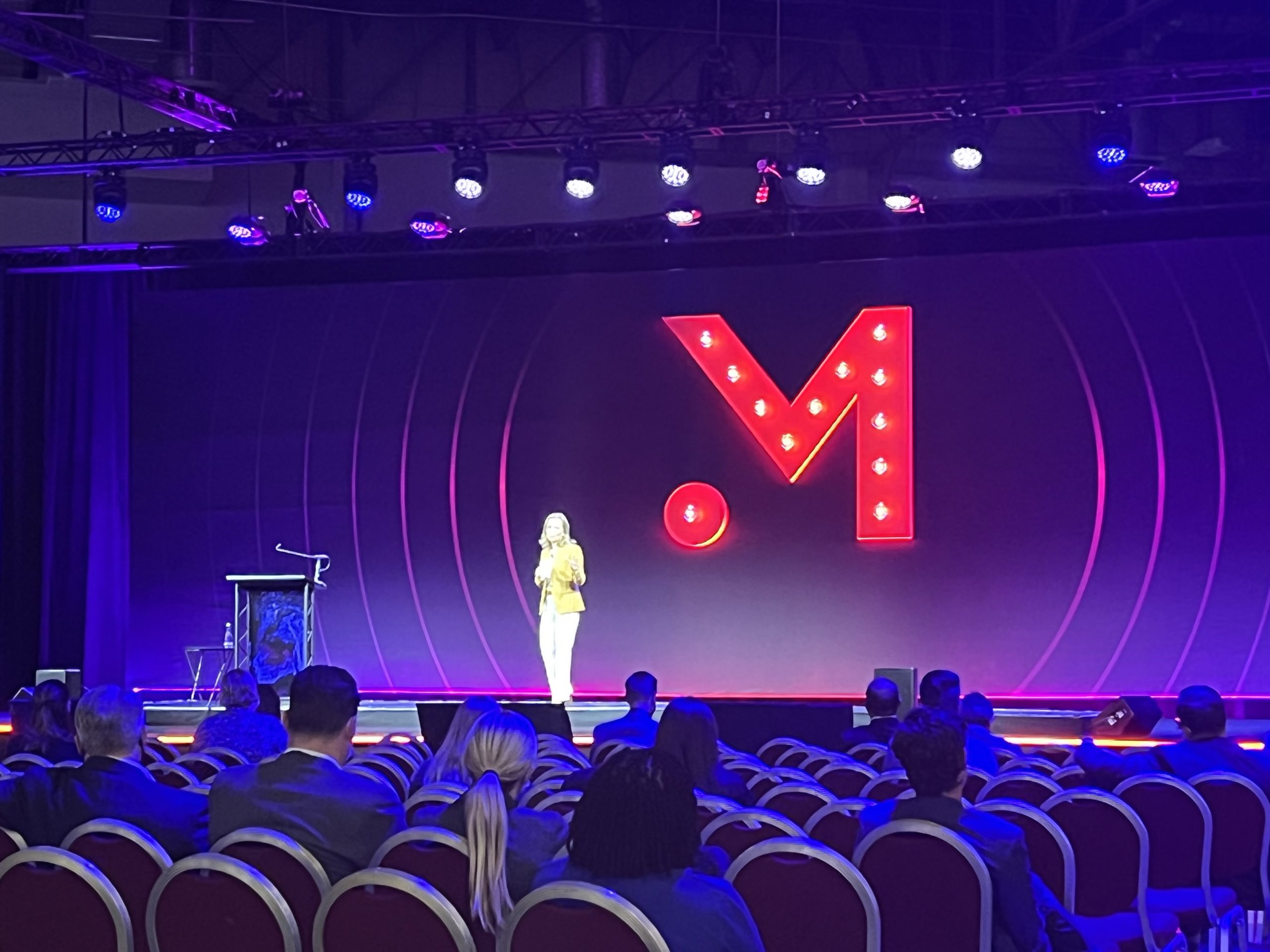 Anthropologists say there are a handful of behaviors which set us apart from other primates. These include using specialized tools and ways to hunt. Another is the way we organize our living spaces.
Anthropologists say there are a handful of behaviors which set us apart from other primates. These include using specialized tools and ways to hunt. Another is the way we organize our living spaces.
These still hold true today. We still use specialized tools. We have unique ways of tracking down what we need. And we put lots of effort into organizing our living spaces. The big difference between now and the days of the stone hand axe is that today’s tools have an on/off switch and most have a silicon chip, too. Technology is now the tool that sets us apart as humans.
Today Ketchum released findings from our new Digital Living Index, which uses cultural anthropology to look at the constant dance of technology adoption / rejection. The study surveyed more than 6,000 people in the U.S., U.K., Germany, France, Spain and China to probe people’s feelings about technology, our seeming love/hate relationship with it and the impact of human experiences on technology attitudes and aspirations.
One of the persistent beliefs– or “dominant narrative” as anthropologists would say –is that technology sells itself. If you build it, people will come buy it. Another is that technology is the great equalizer; it doesn’t matter where you are located because mobile devices and the Internet make that irrelevant.
The Ketchum Digital Living Index calls into question both of these narratives. Life is complex: 76% of the people in our study said they’re not very satisfied with technology’s ability to make their life simpler. As for location, “cultural DNA” plays a strong role in how passionate people are about technology and what trade-offs they are willing to make. The Chinese, for example, are almost twice as likely to say they love smartphones as the French. People in Germany are more likely to sacrifice simplification for empowerment. Americans attach more weight to technology’s ability to share their personal values.
Additional intriguing insights on what drives technology adoption can be found here, including an executive summary and a video that includes cultural anthropologist Emma Gilding and I commenting on the findings.
Unleashing the Inner Anthropologist
If you’re wondering what marketing and communications professionals can do to unleash their inner anthropologist, here are five suggestions based the study:
- Focus on the experience, not just the object. Link product features and capabilities with the experience each type of consumer wants– whether it’s finding the perfect Mother’s Day gift, trying to beat a top gaming score online, tracking your health and wellness stats or getting a to-do list under control.
- Borrow from the consumer packaged goods (CPG) industry. Products like soap have been advertised for over a century, which has helped CPG companies perfect the art of appealing to the experience and not just the object. Although a universal TV remote may never be as easy to use right out of the box as a bar of soap, there is still plenty of room to talk about the ‘consumer’ as much as the ‘tech’ in consumer tech communications.
- Don’t ignore the elephant in the room – simplification. Communicating the ‘what’ – getting easily to the desired end-experience – instead of only the features-focused ‘how’ will forge a stronger emotional connection and brand loyalty.
- Understand the cultural DNA of your target market. Location does matter. Understand the norms and values that shape each culture’s experiences and then connect with them in your programming
- Segment by experiences. Target desired customers according to the values of their human experience rather than simple demographics or what features they use.
By the way, the study describes four kinds of Digital Living natives. To find out which one you are, click here to review the Executive Summary.



